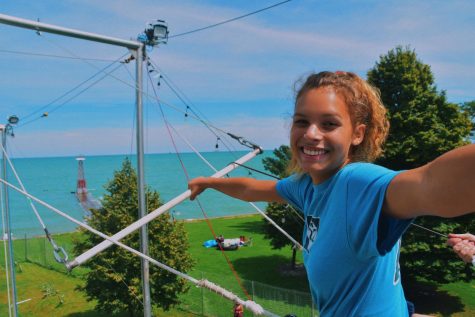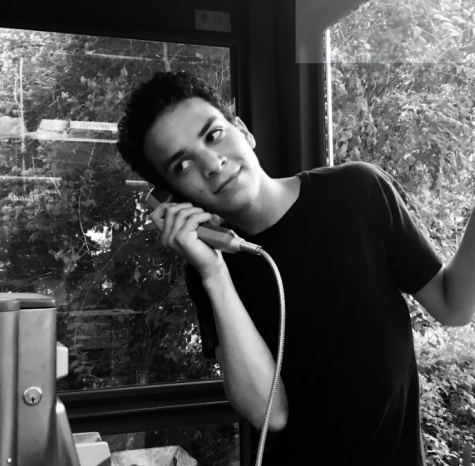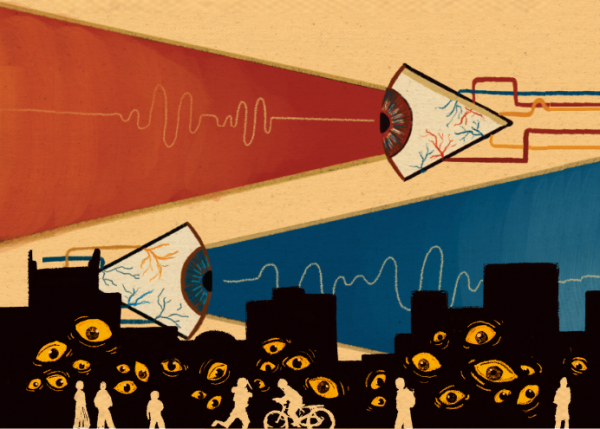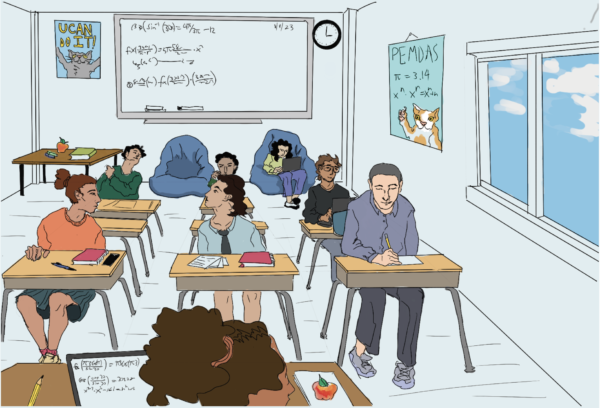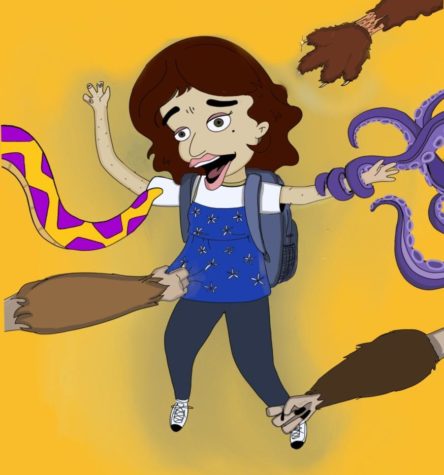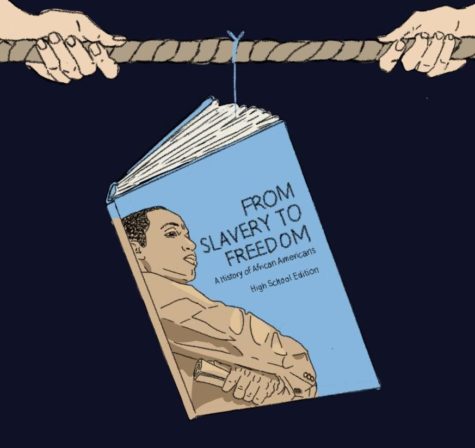How youth activism is breaking the mold
August 26, 2019
Between organizing school-wide walkouts and facilitating change-driven conversations, Evanston’s youth activists have found time to break the mold of activism as we know it.
Youth involvement in activism is not new, especially in Evanston. With activist roots running deep in causes like women’s rights and racial equity, Evanston has been home to notable protests like the Bursar’s Office Takeover, where members of black student organizations at Northwestern University presented a list of demands to administration to illuminate their experiences of racism on campus.
Over 50 years later, efforts are still growing and the definition of activism continues to expand, beyond its conventional notion.
“The way people traditionally think about activism, the bullhorn-toting, protest-leading person is not accessible at all,” senior SOAR board member Grey Miller says.
As Miller suggests, activism encompasses much more than just picket lines and megaphone chants, and many student organizations attempt to incorporate education and discourse into their efforts.
“I learned that communication is a very important concept of activism,” junior Green Team leader Mia Houseworth says. “Without communication, it is merely impossible to educate and inspire others to take action for your issue.”
This communication, however, does not merely exist between fellow students activists; rather, it also vitally exists between the administration and students.
“Transparency is very important because with transparency comes accountability, and so just like we are attempting to sort of shift the paradigm and make sure that students are at the front end of the decisions at things that we do at this school-wide level,” ETHS equity analyst Lauren Hamilton says. “We want to make sure students are also holding us accountable, and so asking students to be involved, that offered partnership, means that when we say something, we need to stick to it.”
Accountability seems to be a central theme within the activist community, showing up in various shapes or forms but most notably, for teens, on the internet.
“In middle school, when I would go on social media, it was definitely base-level activism, and later I was growing frustrated because I didn’t feel like it was changing anything,” senior Kyra Landry says. “That’s when I got into canvassing and more physical, confrontational activism where I was able to speak for myself.”
Alas, the most substantial barrier that most youth activists encounter is the obvious: age. An activist’s age often contributes to their perceived credibility and capability in the activist community.
“I have had a lot of political discussions with my parents; even though we share a lot of the beliefs, there are issues where I’m more to the left than they are,” senior Anaya Visweswaram says. “While it has changed their political views a little, they’re still very limiting on what activism I can do as a minor.”
Even though these barriers, usually constructed by adults in some position of power, create challenges for student activists, many are still finding their own way to continue their work. In the case of Visweswaran, her parents’ reservations do not stop her efforts to get involved. “What I can do is read a lot about what’s happening and educate myself.”
Adults have imposed barriers on youth activism for years, especially in the context of school. However, some activists like Houseworth claim that ETHS promotes student activism.
“Students are often encouraged to participate in clubs or activities that involve activism, and there are a great deal of clubs that can be found at ETHS involving activism,” Houseworth says. “There are clubs that fit all interests, and if there aren’t, there are many faculty members that will help students create activism of their own.”
Other activists like Miller disagree, citing their own experiences with adults being unsupportive of student activism in some capacities.
“Many adults in the building only want students to do work that they feel comfortable with, which prevents students from addressing underlying issues of systems within the school,” Miller says. “I found that when a student does work that the school is proud of, adults will rush to take credit for it, even if they had little to no involvement in it.”
Hamilton is among the host of adults involved in advocacy work, particularly in her role as a facilitator and planner for the school’s affinity-based summits.
“If I’m a staff member that wants students to be at the center of this work, that means that I need to be ready to validate that by actually putting action behind those words and step back as an adult- recognize that this isn’t for me,” Hamilton says. “This isn’t my space, and I’m just there as a support person to make sure things happen basically behind the scenes.”
While staff members like Hamilton are trying to change this culture of adult interference, Hamilton suggests these actions are symptomatic of a much greater problem.
“For adults to presume that they know what’s best for students all the time without even thinking to check in with students or partner in any decision making process is extremely short-sided and it’s normed in this culture that we have,” Hamilton says.
Despite the inaccessibility of activism stemming from marginalization, student activists at ETHS are still working tirelessly towards their own individual and collective goals.
For Miller, a push forward for advocacy work would look like more collaboration and togetherness across all types of advocacy organizations and affinity groups.
“There’s these cultures of all different affinity spaces such as GSA, Latinx Quest, SOAR, etc, but there isn’t a space where all people in advocacy work at ETHS meet up,” Miller says. “I want to move away from that thinking and build a stronger community across affinity spaces.”
The idea of collectivism in activism is a sentiment that is often shared across all types of activism spaces. Student Representative Echo Allen cites “collective power” as an effective tool to conjuring up change.
“Student Union is a collection of students; it’s definitely is not all of the students who are actively doing things in our school,” Allen says. “It’s a really great tool and asset to use the student groups already working in our school with goals and helping them do that; collective power is something that ultimately will get a lot more done and create a stronger community at ETHS.”
Landry views a step forward as a better understanding of activism as listening to marginalized people, as she says, “The biggest part about activism and advocacy that people miss is listening; part of being an activist is being an ally, which you can’t be good at unless you listen to marginalized people.”
Listening as a large component of activism, some youth activists suggest that Evanston misses that mark.
“Even though residents are given an opportunity to speak their mind, the city can do a better job listening to them,” Houseworth says.
Activism is not the sole way to affect change; another type of effort that promotes progress is advocacy,
Visweswaran views activism as being “more involved and more directly pushing for a change,” contrary to advocacy, which focuses on “talking to other people and pushing forward what you believe in.” Advocacy serves as an alternative approach for those who do not necessarily have the time or resources to participate in traditional, picket-line activism.
Allen expands in this definition, saying, “There is being an advocate and there is being an activist. An advocate is somebody who speaks up for issues and brings awareness about issues and is the talk.”
Advocacy, on the other hand, can be as simple as retweeting a post or bringing other views into a conversation about race. Advocacy needs activism and vice versa; activism ignites the movement and advocacy spreads it.
As the definition of activism continues to expand, and advocacy finds itself becoming ever-prominent, ETHS students’ definition of activism and advocacy change as well. Efforts of student activism and leadership are shown throughout the various clubs and organizations within the school.


